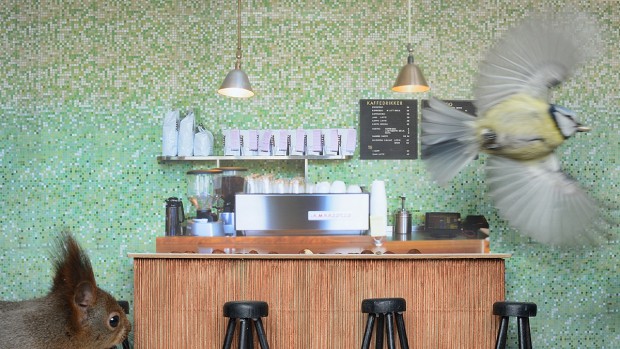
Planet Earth is under intense monitoring, with billions of sensors of various types providing data about environmental conditions. What are we as environmental humanities scholars doing to engage with this vast amount of data being generated?
Humanistic engagement with the natural world has long traditions, especially within literature and philosophy. Scholars and writers tend to describe environmental change in predominantly negative terms, as a turn for the worse, though we also find stories of hope and redemption. There is a reorientation happening in scholarship right now. Scholars across a wide range of disciplines are debating the new state of nature that characterizes what many call The Anthropocene – the age of man, where not just ecosystems, but also the geology of the planet has been irrevocably changed by human activity. Yet, I feel that environmental humanities scholars have not yet come to terms with the vast new sensory apparatus that we use today to know and sense the world around us. It isn’t just nature that has changed – our senses and our knowledge of nature has been augmented and transformed through digital technologies. Weather, pollution, seismic activity, landscape change, and animal movements are but some of these types of data. Another trend is that these sensors are increasingly providing real-time data, and that they have APIs that allow other applications to interact with the data generated.
Ant Spider Bee is dedicated to exploring the digital environmental humanities, or the place where the digital humanities and the environmental humanities meet. These are two very broad umbrella terms, both replete with attempts to define what they actually mean (see for instance Jason Heppler’s fascinating “What is Digital Humanities,” a website that offers 817 different definitions).
Our explorative mindset means that we embrace the multitude of interpretations and meeting places between the digital, the environmental, and the humanities. This can take the shape of environmental humanities scholars using digital tools in their research practices, but can also include topics such as the digital transformation of the natural world. More importantly, we should be as concerned with the speculative – the things we haven’t done yet – as with the things that we are already doing.
I have been trying to create an overview of real-time (or close to real-time) environmental data streams over the last year, mostly out of curiosity. While some such sources of data can be found, there are surprisingly few examples of scholars in the humanities actually doing anything with them. The most interesting examples are typically placed at the intersection between play and experimentation. One compelling example is Mark Sample’s twitterbot “Station 51000”, based on one of the National Oceanic and Atmospheric Administration’s data buoys, now lost at sea but still generating data. Sample combined the environmental data collected by the buoy with Markov-chained content from Hermann Melville’s Moby-Dick, mashing up these two sources into something with its own identity.
Ye, the sensors say the waves are average tonight, at Dominant Wave Period: 11 sec ft. THE OTHER. Exception might be his.
— Station 51000 (@_LostBuoy_) April 13, 2015
Ah, wind blows from the west by in, at Wind Gust: 11.7 knots. The hated whale has lungs and warm blood. I would add, that in the stern.
— Station 51000 (@_LostBuoy_) April 12, 2015
“Station 51000” is an example of critical inquiry through playful making. A broken environmental sensor, lost at sea, can still talk to us and still deliver data about the world. But without the accompanying spatial metadata – its exact location – the data has no meaning. It is a commentary on the Internet of Things and the vast amount of data generated by sensors in the modern world. Things see and sense, but what do they know? What can we know about the world of things?
Connecting with environmental sensors through digital media might allow us to open up windows to nature. Another playful example of this is Piip Show, a webcam set up by the Norwegian Broadcasting Corporation (NRK) in 2014. Putting a webcam in a birdhouse is not new, but NRK took this concept to a new level in Piip Show. They built a miniature coffee shop that functioned as a bird feeder, complete with a tiny screen on the wall displaying Instagram photos tagged #piipshow.
Over the course of three months, this coffee shop became a hit in Norway and across the world, and the regulars in the coffee shop as familiar characters as on any other TV show (the squirrel was my favorite).
As fascinating as these examples are, it seems to me like we could be doing so much more with digital environmental sensors as scholars. Must the digital spring be so silent, with no birds tweeting?
Tell us if you have other examples of digital environmental sensors that can be used in environmental humanities scholarship, or if you have ideas for projects that one might do!
Featured image: Screenshot from NRK.no live stream of Piip Show #nrkpiip. NRK CC BY-NC-SA.

This text was originally published on the Ant Spider Bee website and will also be included in the Ant Spider Bee book.